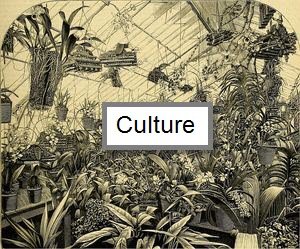Gearing Up with Two Gadgets to Grow Better Orchids
THERE SEEM TO BE FEW HORTICULTURAL pursuits that have more available paraphernalia than orchid growing. The need or practicality of much of the stuff is a matter of personal preference. One grower’s necessity is another’s frill. Still, there are two useful gadgets that I think all orchid growers should have in their growing areas, whether they grow their plants on a windowsill, under artificial lights, in a greenhouse or even outdoors. These are a hygrometer and a maximum/minimum thermometer.
MUGGY OR XERIC
The hygrometer is an instrument that measures atmospheric humidity. Relative humidity is the ratio of the amount of water vapor present in the air compared with the greatest amount it could hold at the same temperature. Hygrometer readings are lower during the day when your growing area is warmest, and higher at night when temperatures are cooler.
Most of us can readily discern an atmosphere that is humid from one that is arid, and can certainly recognize the fresh, buoyant environment that orchids prefer over one that is damp and cloying. Still, the only way you can be certain of the actual level at various times of day is to have a hygrometer (or more than one) to display the relative humidity level to you.
During the cooler months, most orchids will grow well if humidity is kept in the range of 40 to 60 percent, although some prefer humidity levels a bit higher. You will find that many miniature orchids, as well as those typically grown with exposed roots (such as Vandas), appreciate a more humid environment. The same can be said for orchids that are cultivated on mounts of wood, bark, tree fern etc., when compared with those that are grown in pots with a growing medium.
If you can achieve it, many orchids grow best with a daytime humidity level of 70 percent or more during warm weather, but care must be taken that good air movement is maintained. Stagnant, damp conditions promote fungal and bacterial diseases.
TEMPERATURE EXTREMES
Most orchids need a day-to-night temperature variation of at least 10 to 15 F (6 to 8 C) to grow and flower properly. A maximum/minimum thermometer will record those daily temperature extremes for you. The traditional types have small markers in two mercury columns that are pushed to the highest and lowest temperatures that the instrument experiences between the times it is reset. My old gray Taylor brand maximum/minimum thermometers have magnets to reset the markers but I have noticed that newer models seem to have adopted a push-button reset style. Types with digital displays are available too, and some of these are quite impressive for their comparatively modest cost.
Orchid growers and orchid literature generally divide cultivated orchids into cool, intermediate or warm growing types based on the minimum nighttime temperature at which they thrive. A maximum/minimum thermometer will provide you with this information without your having to get up in the middle of the night to check.
You can expect to pay from $10 to $25 for each of these instruments, but you couldn’t make a better investment for your orchids. My philosophy on such items is that you generally get what you pay for. Of course, they will only be worth their price if you monitor them and adjust your growing conditions accordingly. Depending on the size and configuration of your growing area, you will likely find that having more than one hygrometer and maximum/minimum thermometer is useful for helping to identify microclimates within your growing space.
Additionally, there are impressive digital maximum/minimum thermometer and hygrometer combinations on the market for technology lovers. At the touch of a button, you can read indoor and outdoor temperatures, humidity levels and their extremes. Some units are wireless and feature multiple sensors for different locations in the growing area, and some have alarms that can be set if temperatures rise too high or fall too low. Many of these are inexpensive.
You’ll find these gadgets at most larger garden centers, hardware stores and in greenhouse and garden supply catalogs. If you do not use both a hygrometer and maximum/minimum thermometer in your orchid growing area, acquire them and find out if you are providing your orchids with the environment that you intend.
